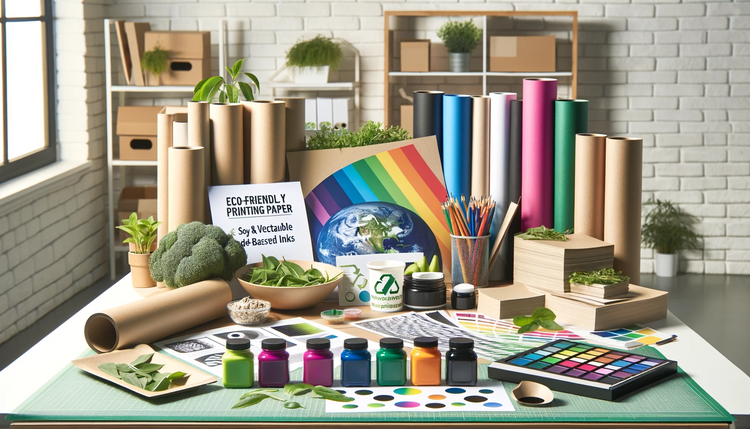In a world increasingly aware of the environmental impact of our daily actions, eco friendly book printing has emerged as a crucial step towards sustainability. With the publishing industry traditionally relying heavily on resources, the need for environmentally conscious practices has never been more pressing. This article delves into the realm of eco friendly book printing, exploring its significance, benefits, and how it is reshaping the publishing landscape.

Understanding Eco Friendly Book Printing
Eco friendly book printing refers to the adoption of practices that reduce the environmental footprint of book production. This includes using recycled paper, non-toxic inks, and energy-efficient processes. By minimizing waste and emissions, publishers can significantly contribute to environmental preservation.
The Importance of Sustainable Practices
The publishing industry has a substantial environmental impact, from deforestation to chemical pollution. By embracing eco friendly book printing, publishers can help reduce these effects, promoting a more sustainable future.
Benefits of Eco Friendly Book Printing
Adopting sustainable printing practices offers numerous benefits:
- Reduction in carbon footprint
- Conservation of natural resources
- Improved public image and consumer trust
Key Components of Eco Friendly Book Printing
Recycled Paper
One of the most significant aspects of eco friendly book printing is the use of recycled paper. This reduces the demand for virgin pulp, thereby conserving forests and reducing waste.
Non-Toxic Inks
Traditional inks often contain harmful chemicals. Switching to soy-based or vegetable-based inks minimizes pollution and health risks.
Energy Efficiency
Implementing energy-saving technologies in printing processes can drastically cut down emissions and lower costs.
Challenges in Eco Friendly Book Printing
Transitioning to sustainable practices is not without challenges. Higher initial costs and the need for specialized equipment can be barriers for publishers. However, the long-term benefits often outweigh these initial hurdles.
Overcoming Obstacles
Support from industry leaders and government incentives can help overcome these challenges, encouraging more publishers to adopt eco-friendly practices.
The Future of Publishing
The demand for eco friendly book printing is expected to grow, driven by increasing consumer awareness and environmental regulations. As more publishers embrace sustainability, the industry is likely to see a shift towards greener, more responsible practices.
Innovations in Green Printing
New technologies and methods are continually being developed to make book printing even more sustainable. From waterless printing to digital solutions, the future of publishing is undoubtedly green.
Why Choose Eco Friendly Book Printing?
Making the switch to eco friendly book printing is not just an ethical choice; it also makes good business sense. By aligning with consumer values and reducing operational costs, publishers can gain a competitive edge.
Case Studies
Several publishers have successfully transitioned to sustainable practices, setting examples for others in the industry. These case studies highlight the tangible benefits of adopting eco friendly book printing.
Conclusion
In conclusion, eco friendly book printing is not merely a trend but a necessary evolution in the publishing industry. By embracing sustainable practices, publishers can contribute to a healthier planet and a brighter future for all.

FAQs
What is the main goal of eco friendly book printing?
The main goal is to reduce the environmental impact of book production by using sustainable materials and processes.
Are there cost benefits to eco friendly book printing?
Yes, while initial costs may be higher, long-term savings are realized through reduced resource consumption and energy efficiency.
How can publishers transition to eco friendly book printing?
Publishers can start by using recycled materials, adopting energy-efficient technologies, and seeking guidance from industry experts on sustainable practices.
This article contains affiliate links. We may earn a commission at no extra cost to you.







